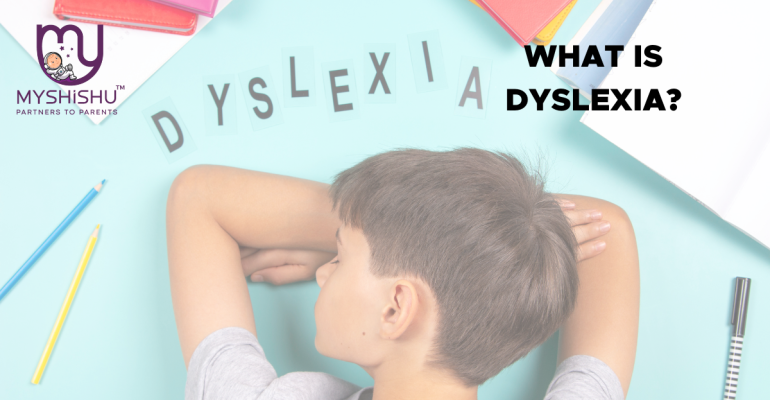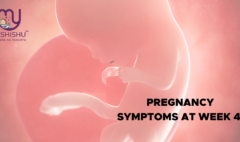Dyslexia: A Comprehensive Guide for Parents and Educators Dyslexia
Dyslexia: A Comprehensive Guide for Parents and Educators Dyslexia
One particular type of learning disability that mostly impacts writing and reading abilities is dyslexia. But it has an impact on more than just these abilities. In reality, dyslexia is a problem with information processing. People who are dyslexic may find it difficult to absorb and retain the information they hear and see, which can hinder their ability to acquire and develop literacy skills. Additionally, dyslexia can affect other domains, like organizational skills. It’s critical to remember that adopting a different perspective has advantages. Many dyslexics excel in logical thinking as well as the arts and creative sciences.
Introduction
One learning disability called dyslexia mostly impairs the ability to read and type words correctly and fluently. Difficulties with phonological awareness, verbal memory, and verbal processing speed are characteristics of dyslexia. Across the spectrum of intellectual capacities, dyslexia is present. It is better viewed as a continuum rather than a discrete category, with no obvious boundaries. Co-occurring problems can be observed in language, motor coordination, mental math, focus, and personal organization domains, but they do not indicate dyslexia on their own. How someone reacts or has responded, to well-founded intervention can provide valuable insight into the degree and persistence of dyslexia issues.
About Dyslexia
A neurological condition called dyslexia can significantly affect a person’s ability to learn, perform well on the job, and go about their daily lives. Everybody is different, and this includes how they have experienced dyslexia. It can co-occur with other specific learning impairments and range in severity from mild to severe. It is a chronic illness that typically runs in families.
It’s critical to remember that adopting a different perspective has advantages. Many dyslexics excel in logical thinking as well as the arts and creative sciences.
How Dyslexia affects language understanding
Spoken language is the foundation of reading. Simple noises are the first steps toward communicating in early life. Learning how to combine sounds to create words, phrases, and sentences comes naturally as you acquire additional sounds. Learning to read requires making the connection between various written symbols (letters) and sounds.
This is where the issue of dyslexia arises. It tampers with your brain’s ability to “decode” written material through spoken language. When you read, your brain has a hard time comprehending what you read, especially when it comes to decomposing words into sounds or connecting letters to sounds.
That processing lag can have an impact on all subsequent events. This comprises slowed reading due to difficulties comprehending and digesting words, problems with spelling and writing, and issues with the way your memory stores, words and their meanings, having difficulty speaking in complete phrases.
How common is dyslexia?
Although dyslexia is rare in general, it is sufficiently common to be well-known. According to experts, it impacts roughly 7% of people globally. It has an equal impact on people of all races and genders.
Many folks, meanwhile, don’t have symptoms severe enough to warrant a diagnosis. Including those who have symptoms but are not yet diagnosed, dyslexia may impact as much as 20% of the global population.
Symptoms and Causes
What causes Dyslexia?
It’s unclear what specifically causes dyslexia. Still, several hints point to how and why the majority of cases occur.
- Genetics: Dyslexia occurs in families and is largely genetic. A child has a 30% to 50% chance of acquiring dyslexia if one of their parents has it. Dyslexia can also be more likely to occur in those with genetic disorders like Down syndrome.
- Variations in the structure and function of the brain: Being dyslexic makes you neurodivergent. This indicates that your brain did not develop or function as it should have. There are structural, functional, and chemical changes in the brains of dyslexics, according to research.
- Disturbances in the growth and operation of the brain: Toxic exposures, infections, and other events can interfere with fetal development and raise the likelihood that dyslexia will develop later in life.
Factors at Risk
Several risk factors influence a person’s likelihood of developing dyslexia. They consist of (but are not restricted to):
- Exposure to toxins. The risk of dyslexia can be raised by pollution in the air and water. This is particularly true for nicotine, certain compounds used as flame retardants, and heavy metals (such as lead or manganese).
- Not having access to literature: Children who grow up in homes where reading is discouraged or where there is a lack of access to reading materials are more likely to acquire dyslexia.
- Limitations of the learning environment: Dyslexic children are more likely to develop when they are in contexts such as schools where there is less support for learning.

What are the signs and symptoms of Dyslexia?
As a child grows older, dyslexia can appear as:
- Spelling simple words is difficult.
- Having trouble remembering letter names.
- As a youngster grows older, dyslexia frequently manifests as:
- Spelling simple words is difficult
- Having trouble remembering letter names.
- Difficulties differentiating between letters having similar forms, as “p” and “q,” or “d” and “b.”
- Problems with rhyme.
- Unwillingness to read out loud in class.
- Difficulty pronouncing new words.
- Difficulty matching sounds to letters or word segments.
- Difficulty understanding syllable combinations.
- Rearranging the phonemes in a word.
How is Dyslexia diagnosed?
Despite being caused by variations in the brain, dyslexia cannot be identified by blood testing or laboratory screenings. Rather, a thorough assessment and testing of typical indicators helps to identify an individual with this reading issue.
The following should be examined in a dyslexia test: decoding (reading unknown words by sounding them out).
- Verbal communication abilities.
- Reading comprehension and fluency.
- Grammar.
- Lexical content.
- Word identification.
When should I have my child tested for Dyslexia?
For learning difficulties, early assessment is usually the most beneficial. An early diagnosis allows your child to start learning new reading methods sooner. Although many kids have reading difficulties before they enter third grade, reading demands rise with age, so it’s critical to identify learning disorders as soon as feasible.
The school may suggest that your kid be evaluated by a licensed educational psychologist for learning problems. If you are unable to find one, ask the management of the school for assistance.
What treatment options exist for Dyslexia?
As of right now, dyslexia is not treated by drugs. Alternatively, educational interventions can impart new and efficient reading and learning strategies.
Children with dyslexia can learn new reading abilities by working with a qualified specialist. Lessons can be slowed down to offer dyslexic students extra time to cover material. To make sure your child receives the education they deserve, collaborate with their school.
How can I help my child with Dyslexia?
Spending time reading aloud to your child is the most crucial thing you can do. They can benefit from that time together as they practice reading.
It’s also critical to keep in mind that your child cannot control their dyslexia. Show tolerance and encouragement. Your support and encouragement may be just what your child needs to overcome their dyslexia and learn how to manage it. Additionally, it can lessen their anxiety or fear of engaging in reading-related activities.
Being an advocate for your child is another option. You and your child’s school can create an Individualized Education Plan or IEP. This paper outlines your child’s specific learning objectives and lesson plans for school.
Addressing Difficulties: Solutions in Education
The academic performance of dyslexic learners can be greatly impacted by instructional strategies designed specifically for their needs. Among the successful interventions are:
- Programs for Structured Literacy: These focus on teaching phonemic awareness, phonics, vocabulary, fluency, and comprehension explicitly.
- Multimodal Methodologies: Adding tactile, aural, and visual components to learning can improve comprehension and retention.
- Assistive technology: Programs that convert text to speech, audiobooks, and speech recognition software can all be very helpful.
Can you still be successful if you have Dyslexia?
Yes. While dyslexia presents challenges for many who have it, there’s no shortage of high-achievers with dyslexia. Some examples of famous or very successful people with dyslexia include:
- Jennifer Anniston (actor, producer).
- Richard Branson (entrepreneur, businessperson and philanthropist).
- Cher (singer).
- Anderson Cooper (journalist).
- Tom Cruise (actor).
- Amanda Gorman (poet).
- Selma Hayek (actor, director).
- Albert Einstein
What does living with Dyslexia mean?
One prevalent misperception is that dyslexia is an illness. The idea that someone who has dyslexia is less intelligent is another common myth. These two concepts are untrue. In actuality, evidence indicates that dyslexia and IQ are unrelated. Many dyslexics go on to achieve great success in their chosen careers.
Reading is difficult for you if you have dyslexia, not because you’re incompetent or lazy. Learning dyslexia management strategies is essential for both successful learning and self-esteem. Recognize that dyslexia is not a sign of low intelligence.
Frequently Asked Questions (FAQs)
-
How prevalent is dyslexia?
Dyslexia is estimated to affect approximately 15-20% of the population. It occurs across all ethnic and socioeconomic groups and can manifest in varying degrees of severity.
-
At what age can dyslexia be identified?
Dyslexia can be identified as early as preschool or kindergarten. Early signs may include difficulty with rhyming, recognizing letters, or associating letters with their corresponding sounds. However, a formal diagnosis is typically made when a child’s reading difficulties become more apparent in primary school.
-
What are the common signs of dyslexia?
Common signs of dyslexia include challenges in phonological processing, decoding, fluency, and spelling. Individuals with dyslexia may struggle with recognizing sight words, reading at a slower pace, and experiencing difficulty with spelling rules.
-
Is dyslexia a lifelong condition?
Yes, dyslexia is a lifelong condition. However, with appropriate interventions and support, individuals with dyslexia can learn effective strategies to manage their challenges and achieve academic and professional success.
-
Can dyslexia be inherited?
There is a genetic component to dyslexia, and it often runs in families. If a parent has dyslexia, their children may have an increased risk of developing the condition. However, environmental factors also play a role.
-
How is dyslexia diagnosed?
Dyslexia is typically diagnosed through a comprehensive assessment conducted by educational psychologists or other qualified professionals. The assessment may include tests of reading and writing skills, as well as an examination of cognitive abilities and language development.
-
What educational interventions are effective for dyslexia?
Structured literacy programs, multisensory approaches, and assistive technologies are commonly used educational interventions for dyslexia. These methods focus on explicit teaching of phonemic awareness, phonics, fluency, vocabulary, and comprehension.
-
How can parents support a child with dyslexia at home?
Parents can support their children by fostering a positive attitude towards learning, providing a quiet and organized study environment, encouraging reading for pleasure, and collaborating with educators to implement appropriate interventions.
-
Can individuals with dyslexia succeed academically and professionally?
Absolutely. Many individuals with dyslexia have achieved remarkable success in various fields, including business, science, and the arts. With the right support, accommodations, and self-advocacy, individuals with dyslexia can excel academically and thrive in their chosen careers.
Conclusion:
In conclusion, dyslexia is a complex condition that demands a multifaceted approach to understanding, support, and empowerment. By fostering awareness, implementing effective educational interventions, and promoting a positive and inclusive societal attitude, we can create an environment where individuals with dyslexia not only overcome challenges but also thrive and contribute their unique strengths to the world. Embracing neurodiversity is not just a moral imperative but a pathway to a richer, more inclusive society.











